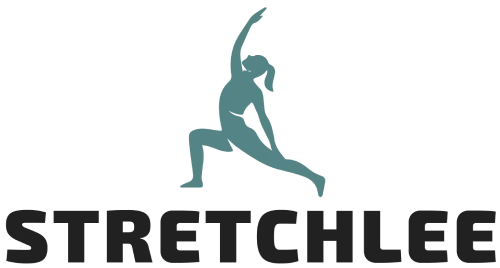Whether due to repetitive motions such as typing, swinging a racquet or due to inflammation (bursitis), irritation of your nerves, or even due to mere overuse, elbow pain can put your daily life on hold. Stretching for elbow pain is an easily achievable form of pain relief to ease the joints by reversing cramps, increasing circulation, and reestablishing full mobility.
Here, you will find out which factors tend to cause discomfort in the elbow, what the main advantages of specific stretches are, the detailed routes of tennis elbow, golfer’s elbow, nerve glides and others, and what clear indicators exist according to which it is necessary to address a professional.
You will also receive practical prevention advice, such as ergonomic modification, warming up routines, and exercises to strengthen various regions as well, to be pain-free and to ensure that you get back to work, sports or other basic routines, without fear. You can visit our previous article if you’re concerned about shoulder pain.

What Causes Elbow Pain?
The causes of elbow pain may be varied, and the knowledge of the point of the root of the problem is the key to the successful relief of the pain:
- Tennis Elbow (Lateral Epicondylitis): This injury causes pain on the outer side of the elbow, and it should be avoided through repetitive extension of the wrist, which leads to the overuse of the forearm muscles. It can be triggered by activities such as racket sports, painting, or typing. On the one hand, by including stretching of the elbow pain with a specific focus on the wrist extensors, one will reduce strain on the lateral epicondyle.
- Golfer’s Elbow (Medial Epicondylitis): It is pain radiating on the inner side of the elbow due to repetitive pronation and flexion of the wrist. It can be caused by such activities as swinging a golf club, hitting nails, or playing musical instruments. Wrist flexor pain can be relieved with gentle stretching to relieve loads on the medial epicondyle.
- Bursitis: The inflammation of the bursa sac that encompasses the joint fluid can cause bursitis symptoms such as warmth, swelling, as well as pain. The notorious culprits are overhead movements and direct injury to the elbow. Although rest and ice are the main treatments, the introduction of stretching for elbow pains when the active inflammation has settled down can help regain the range of movement.
- Nerve Entrapment: An example of nerve entrapment is cubital tunnel syndrome, where the ulnar nerve at the elbow is compressed, and this causes numbness, tingling or weakness in our ring fingers and little fingers. Certain nerve gliding exercises, like stretching for the elbow pain program, can assist in the mobilisation of the ulnar nerve and alleviate the ailment.
- Overuse or Strain: The repetitive movements encountered in sports, work or everyday errands can overuse and tire the muscles/tendons that surround the elbow area, even without a diagnosis. Regular stretching for elbow pain will keep the muscles in balance and avoid microtear injuries, causing chronic muscle stiffness.
Identifying the exact problem of your elbow pain will orchestrate the types of stretches and complementary therapies that should be used.

Benefits of Stretching for Elbow Pain
Making elbow pain stretching part of your business gives you an assortment of benefits:
- Stretches out stiffness: Stretching will straighten up tight muscles and tendons that surround the elbow joint and thus loosen it and making any movement easier to carry out in the daily routine.
- Improves the flow of blood: Dilating the blood vessels supplying the injured part will accelerate the healing as it increases the supply of oxygen and nutrients and removes the metabolic waste.
- Delta-}+ Reduces Inflammation: With regular stretching of the elbow pain, the process of inflammation is also modulated due to the ability of the stretching process to positively affect the process of lymphatic drainage and muscle relaxation.
- Avoids Re-Injury: Stretching helps better flexibility and musculature, thus making the musculoskeletal system more resilient and reducing the chances of repeated strains.
- Muscle Strengthening: Muscle strengthening stretches are exercises that also strengthen muscles in preparation for more intense exercise or physical work.
- Brings Better Function To The Joints: Having a better range of motion implies that the joint can perform better in sport, work, and leisure activities without pain.
- Increases Mind Body Improvements: Paying attention to good body mechanics during a stretch to eliminate elbow pain can enable you to become aware of compensation early on, so you can shift posture or movement before pain levels become severe.
This combination of benefits is cumulative, applied consistently and, therefore, leads to immediate symptomatic improvement, as well as lasting joint longevity.

Best Stretches for Elbow Pain
To warm up, engage in cardio light activity, such as brisk walking, or make circles with arms, 3-5 minutes before stretching. Go gradually into each stretch, deep breathing and never push further than you should be comfortable. Repeat everything 2-3 times (but not otherwise signified) and hold each position 15 30 seconds.
1. Wrist Extension Stretch (For Tennis Elbow)
How to perform: Keep your afflicted arm down with your palm facing you, with the hand about shoulder high. Now use your opposite hand and, by gently pulling on the palmar side of your hand and fingers, pull the back to the front and toward your chest.
Its benefit: This stretch works on the muscles in the upper arm of the forearm, which is the same group that gets overused in tennis elbow. When you include this as a stretch elbow pain exercise, this relieves the stress at the lateral epicondyle.
2. Flexor Wrist stretch (Golfer’s elbow stretch)
How to do it: Stretch your arm in front, raised with the palm up. Try to exert some pressure with your fingers and the palm of your other hand by pressing them down until they create a stretch in the inner muscles of the forearm.
How it can be useful: During this exercise, the flexor-pronator muscle group that attaches to the medial epicondyle becomes stretched, which is optimal when the patient is practising stretches in regards to their elbow pain caused by golfer’s elbow.
3. Triceps Stretch
The way to do it: Lift one arm in the air, bend an elbow and allow your hand to hang down your back. With the free hand, saw backwards gently the elbow.
Reason why it helps: This stretch eases secondary tightness around the elbow joint, which is part of other stretching exercises to relieve pain in the elbow.
4. Forearm Towel Stretching
How: Take a small towel and roll it up, and then place each end in each hand, rolled forward on your back, one over the shoulder, the other behind the lower back. The top hand then grabs and pulls upwards on the towel to stretch the bottom arm, top forearm. Then they alternate.
Why it helps: The dynamic stretch works flexors and extensors, which is why it is a very versatile element in stretching out elbow pain programs.
5. Nerve Glide- Ulnar Nerve
How to: Place your elbow bent facing your face, and with the palm facing you. Bend back your wrist and fingers, and gradually straighten the elbow and the arm, dropping it to your side, with palm turned upward.
The reason it helps: A nerve gliding exercise helps to break the symptoms of entrapment during the cubital tunnel syndrome and is a significant factor in stretching in case of the elbow pain-related nerve irritation.
6. Supination/Pronation Stretch
The way to do it: Take a lightweight (a hammer, for example), bend your elbow at 90 degrees and hold it in the direction straight up. Turn slowly the forearm until the palm is up (suppination), then down (pronation), and stop at each extreme.
How it is helpful: This motion promotes the rotational movement of the forearm, which is a major element of overall stretches during the elbow pain treatment plan.
7. Drill on the flexibility of the Finger and Wrist
How to do it: lay the palm of your hand on a table, and slowly move each finger, one by one. Then, by placing the edge of the table under the wrist and the fingers resting downward, lift the hand.
Why it helps: Also, the flexibility practice of the fingers and wrists supplements the overall workings of the elbows, and it also adds to larger movements of the stretch exercising of the elbows.

When to See a Doctor
Although mild to moderate cases of elbow pain can be treated with home-based stretching, seek medical attention in case one has one of the following symptoms:
- Chronic Pain: The pain that does not alleviate within 24 weeks of regular stretching/resting.
- Swelling or Redness: Indication that there has been a lot of inflammation or a potential infection.
- Numbness or Tingling: They will be symptoms of nerve involvement, which might need special treatment.
- Weakness: Extreme difficulty in grasping items or carrying out activities of daily life.
- Joint Deformity: noticeable alterations in the physique or orientation of the forearm.
Diagnostic test (imaging, nerve conduction, etc.), as well as an intervention (bracing, specific physical therapy, anti-inflammatory medications), can be conducted and prescribed by a physician or physical therapist.
Tips for Preventing Elbow Pain
Prevention is the key step. Add to these habits your stretching for elbow pain regimen that will keep you pain—free:
- Warm Up: Warm up before each of your strenuous activities by spending 5-10 minutes with light aerobics and dynamic arm movements.
- Apply Good Ergonomics: Make sure that the desk, keyboard and mouse are adjusted to ensure that during computer use, the elbows are at approximately 90 90-degree angle.
- Take Frequent Breaks: In case your work entails a lot of actions requiring similar movements, remember to take a break after every 30-60 minutes to stretch or change posture.
- Build Up Strengthening Muscles: Ambulatory exercises involving strengthening of the forearms (wrist curls, reverse wrist curls and dumbbell triceps extension) and upper arms are important in developing the muscles and making them strong.
- Pay attention to Your Body: When you begin to feel discomfort, instead of continuing to train at your pace, slow things down or change your form.
- Rotate Jobs: This also means switching to jobs that focus on different tissues and so as to avoid straining the tissues.
- Stay Generally Flexible: Stretch the muscles around the affected part, shoulders, neck and upper back on a regular basis, in order to maintain a balanced posture and working biomechanics.
- Buy Good Gear: Aim to use ergonomical equipment, grips or braces when playing sports and in manual work to minimise avoidable effort.
Once you incorporate these preventive measures into your daily routine, including stretching and addressing elbow pain, you get a sounder framework to maintain good joint health in the future.

Final Thoughts
This may be characterised by frustration as well as restrictions, but with a systematic system that will focus on stretching to counterbalance the pains of having such an elbow, care can be given right, and safety too. You can apply the same targeted stretches below to overcome tennis elbow, golfer’s elbow, or the general over-load ailment, and when used along with the right rest, ergonomics and strengthening, it develops into a multi-pronged approach to healing.
However, practice consistency: it is crucial to practice every day, to listen to your body and to address a specialist in case it is so needed. Through hard work and proper methods, you can regain comfort, freedom of movement, confidence in your elbows, and start doing what you love to do without any pain.
Frequently Asked Questions
How frequently should to stretch the pain in the elbow?
The recommended stretches should be done 2 to 3 times a day; each stretch lasting 15 to 30 seconds in a cycle. On your high activity or flare‑up days, which may include increased activity, you can incorporate a light activity before your activity and after your activity to warm up muscles and allow them to feel limber to retain joint flexibility.
Is it possible that stretching will improve my elbow pain?
In case you experience sharpness (as opposed to gentle tension) in a stretch, lighten up immediately. Never go fast into any movements, breathe deep and never crank your Ryot. When you feel pain then either decrease the intensity of the stretch or take a break for a few days.
At what point can I omit the home stretching and run to the doctor?
You should have a medical assessment when:
- After stretching and rest, observed regularly during 24-4 weeks, pain continues
- You have considerable swelling, redness or warmth on the elbow
- Your hand or fingers are numb, crawl, or become particularly weak
- You observe any deformity or inability to bend/extend the joint
What are other plans that accompany stretching in the long-term care of the elbow?
Besides the stretches done daily:
- Use ergonomic interventions (desk fix, grips of the tool) to minimise repetitive strain
- Do warm-up exercises and give yourself frequent breaks during monotonous work
- Use forearms and triceps exercises twice to thrice a week
- Other exercises to prevent the maximum overload of a similar muscle group








2 thoughts on “Stretching for Elbow Pain: Causes & Effective Stretches”
Simply want to say your article is as astounding. The clearness in your post is just cool and i could assume you are an expert on this subject. Well with your permission let me to grab your RSS feed to keep up to date with forthcoming post. Thanks a million and please keep up the rewarding work.
Thank you so much for your kind words! I really appreciate it — glad you’re enjoying the content. Stay tuned for more updates!